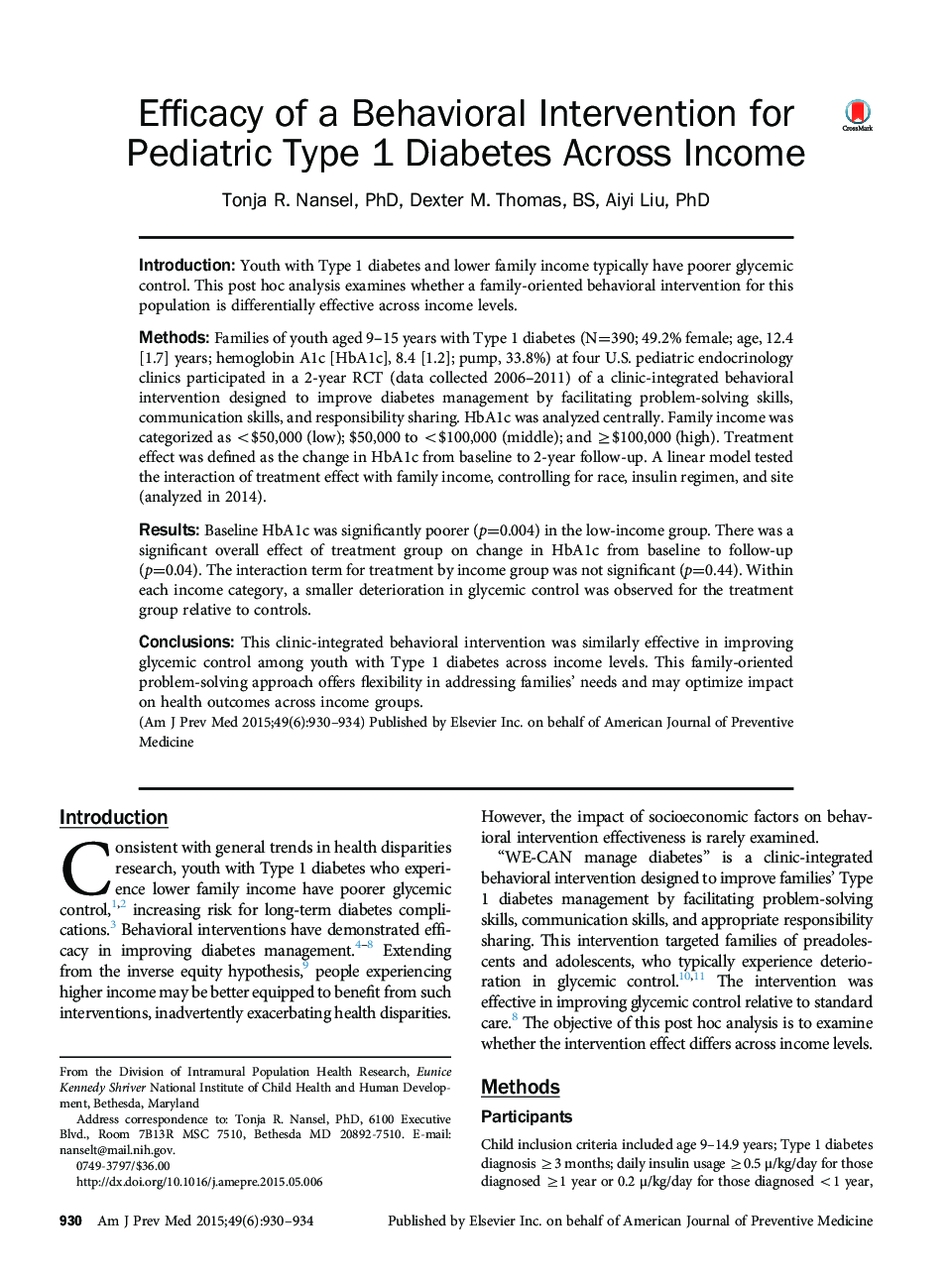| Article ID | Journal | Published Year | Pages | File Type |
|---|---|---|---|---|
| 6237363 | American Journal of Preventive Medicine | 2015 | 5 Pages |
IntroductionYouth with Type 1 diabetes and lower family income typically have poorer glycemic control. This post hoc analysis examines whether a family-oriented behavioral intervention for this population is differentially effective across income levels.MethodsFamilies of youth aged 9-15 years with Type 1 diabetes (N=390; 49.2% female; age, 12.4 [1.7] years; hemoglobin A1c [HbA1c], 8.4 [1.2]; pump, 33.8%) at four U.S. pediatric endocrinology clinics participated in a 2-year RCT (data collected 2006-2011) of a clinic-integrated behavioral intervention designed to improve diabetes management by facilitating problem-solving skills, communication skills, and responsibility sharing. HbA1c was analyzed centrally. Family income was categorized as <$50,000 (low); $50,000 to <$100,000 (middle); and â¥$100,000 (high). Treatment effect was defined as the change in HbA1c from baseline to 2-year follow-up. A linear model tested the interaction of treatment effect with family income, controlling for race, insulin regimen, and site (analyzed in 2014).ResultsBaseline HbA1c was significantly poorer (p=0.004) in the low-income group. There was a significant overall effect of treatment group on change in HbA1c from baseline to follow-up (p=0.04). The interaction term for treatment by income group was not significant (p=0.44). Within each income category, a smaller deterioration in glycemic control was observed for the treatment group relative to controls.ConclusionsThis clinic-integrated behavioral intervention was similarly effective in improving glycemic control among youth with Type 1 diabetes across income levels. This family-oriented problem-solving approach offers flexibility in addressing families' needs and may optimize impact on health outcomes across income groups.
